Introduction to Dunhuang
As some of you might have seen in the hit Netflix series Marco Polo, Marco Polo himself was enchanted when he first arrived 700 years ago by the Buddhist grottoes, vibrant culture, and commotion of the Silk Road itself. Established way before the Venetian traveller documented the city in detail as an international import and export hub since 111 BC (Han Dynasty), as well as the diverse mix in religion, language and intellect in the well-known book The Travels of Marco Polo.Â
The Silk Road served as more than just a trade network for merchandise and precious commodities, the mix of population constant migration and movement also made it the perfect breeding ground for an exchange of ideas, cultures, beliefs and knowledge that shaped the surrounding regions. Travellers that took the Silk Roads often took with them science, art, and literature that have come to disseminate into neighbouring communities along the route, including musical instruments like the Erhu or Pipa. Some of the fruits and vegetables we have today in various Chinese cuisines were also of foreign origins, like tomatoes, grapes and even carrots! Up till today, many historical monuments and architecture still stand in all its glory of the days that have passed, marking this driving force in the formation of diverse societies across Eurasia.
In the North-west of China is Dunhuang, a strategic city that is of great logistical importance, marking the crossing of two major trading routes within the Silk Road. Like a medieval highway, the city is a vital resting point for all sorts of travellers and pilgrims alike. Just on the outskirts of the Taklamakan Desert, Dunhuang is the first stepping stone for trading when merchants arrive in China from the West. The location is also frequented by Buddhist pilgrims, where various religious activities took place. Being the forefront of the Silk Road, it also served its purpose as a garrison town. The city continued to serve its role in the Silk Road until the 11th Century where the road’s importance slowly came to a decline.
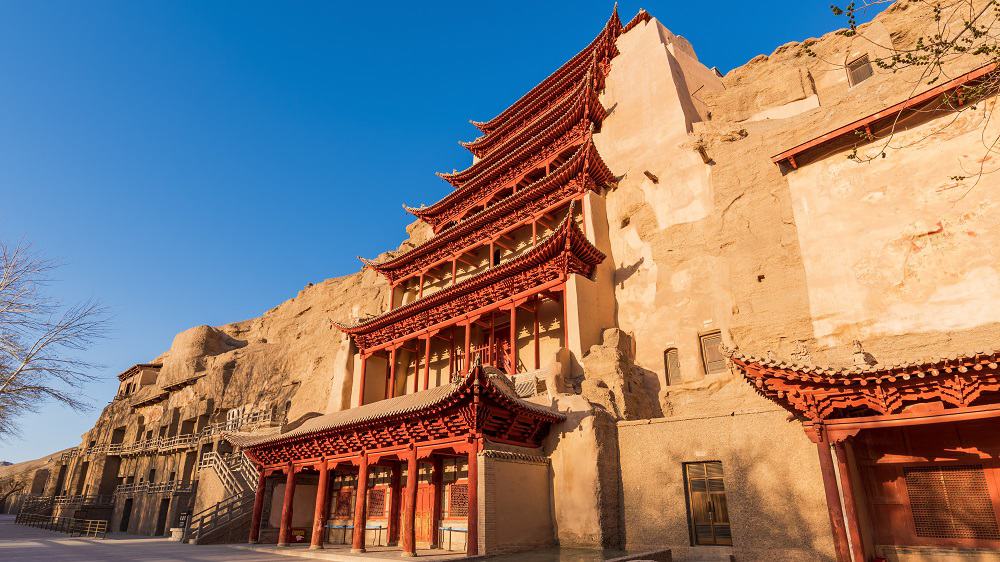
Mogao Caves
South of Dunhuang lies the Mogao Caves, an amazing array of nearly 500 caves that contain a large depository of historic documents along the Silk Roads. One of the caves known as the “library cave†contains almost 40,000 valuable scrolls that helped us understand the cultural diversity and value of Dunhuang. Dating back to as old as 400 AD, the scrolls demonstrate how Dunhuang was a hub for cultural exchange and learning, showcasing the world’s first printed book and the woodblock technique that spread throughout Asia in the centuries to come.Â
Besides being an illustration of Dunhuang’s intellectual exchange, the caves are also known as “Qianfodongâ€, meaning “the cave of a Thousand Buddhasâ€, dating back to 366 AD where the first Buddhist monks decided that the city was an epicentre for Buddhist learning. Over time it has drawn large numbers of pilgrims to the city, also allowing Monks to travel along the Silk Road to spread their beliefs. Each cave would have been built with an intensely religious ritual, involving prayers, incense, rituals and fasting. The caves not only highlight the religious importance of Dunhuang city, but also its significance as the centre of culture and a commercial hub.Â
Despite being largely populated by a Buddhist population and monks, the scrolls at Dunhuang also collected various texts including that of Jewish, Christian and even Taoist manuscripts. This also highlights how the various traditions had coexisted in harmony at this bustling city, indicating how the community was not only international but also accepting of different religious backgrounds and cultures from all around the world, a true cosmopolitan of its time. If you would like to dive deep into the driving force that shaped Eurasia as it is, there is no better place to come.Â
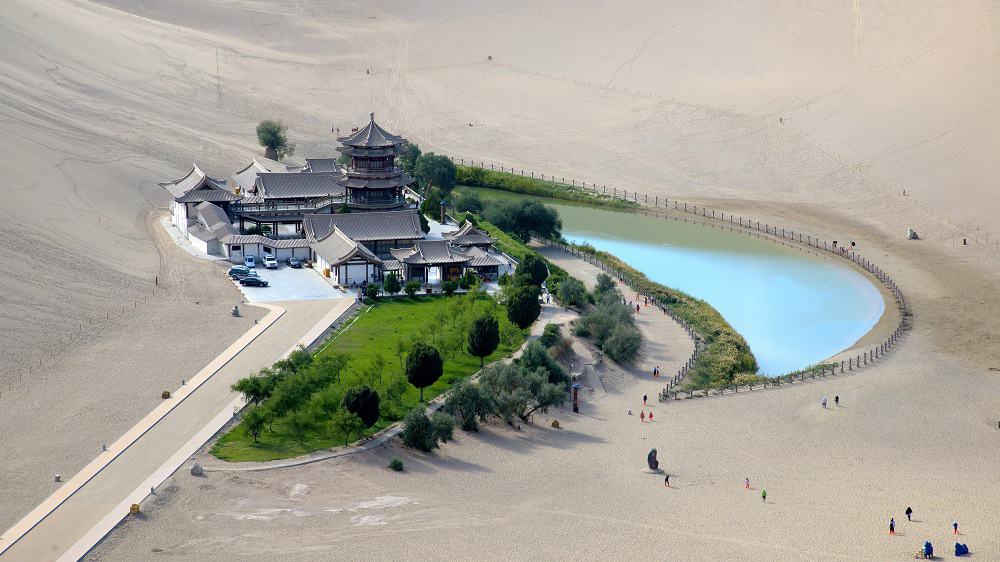
Singing Sand Dunes
Just a few kilometres south of Dunhuang is the Singing Sands Dune, also known as “Mingshaâ€Â (a Chinese name for “singing sandsâ€) because of the sonorous sounds made when the wind whistles through the sand. Visit this dune that’s sheer scale can show how nature never ceases to awe even the most seasoned traveller. Don’t be afraid to get a little sand in your shoes and trek around to visit the famous Crescent Moon Lake, which is a true sight to marvel at. A pure spring water lake surrounded by high mountains, a rare sight in such an arid climate with dunes all around. If you don’t want to travel on foot, consider getting on a buggy or riding a camel through the dunes to feel what it was like to be travelling through bellows of yellow sand.Â
In the old days, caravans travelled through the dunes along the Silk Road to Eurasian cities for trade, the sound of the breeze through the dunes creating a wondrous tone mingled with the jingle of camel bells. Now you can trek upon their tracks that have faded in the sand, and enjoy the beautiful waves made by winds against the grain against a stark blue sky, as if transcending through time to hear what their ancestors before them have heard before.
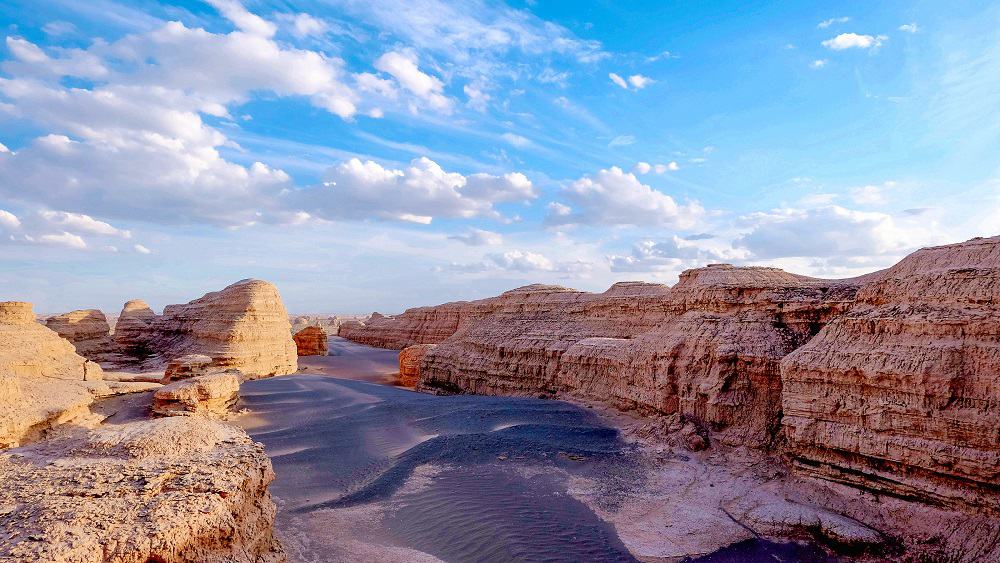
Yadan National Park
A Geopark of enormous size, the Yadan National Park is in the northwest of Dunhuang. One of the largest of Yadan Landform found so far, it spans across about 398 square kilometres and features a unique and wonderful scene of the Gobi Desert landscape. Mainly formed by wind erosion, the landforms here are akin to some of the world’s most famous architecture, only that it’s carved by nature. Find a “Sphinx†or an Arabian “Mosque†next to an array of animal-like figures, in the Yadan National Park, your imagination is part of the landscape. Referred to as the Yadan Abode of Demons by some locals, these strangely shaped landscapes are almost like a medieval city.Â
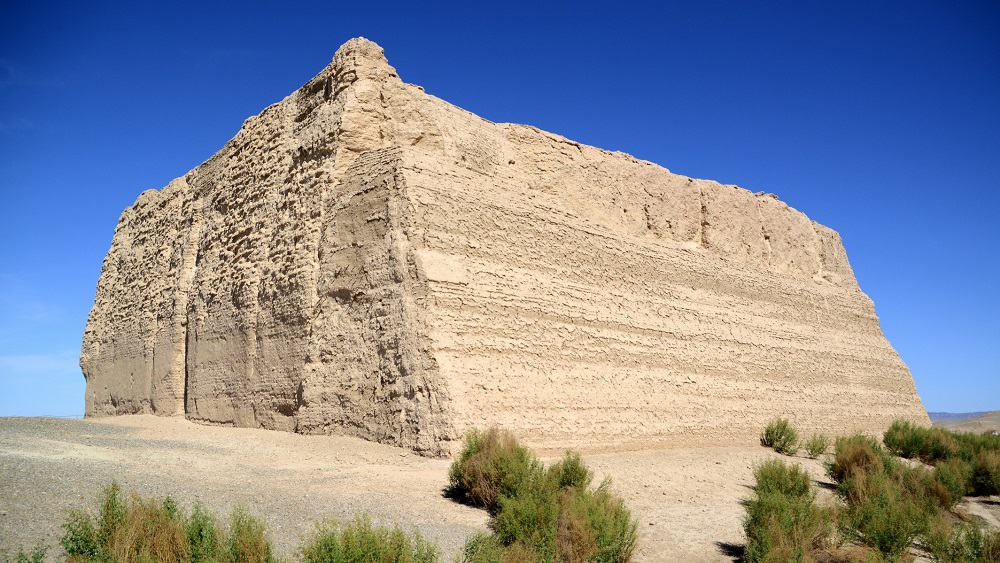
Yumen Pass
Built during the Han Dynasty, it is one of the two passes along Dunhuang that connects the Silk Road to its northern routes. One of the best-preserved passes, it is also a UNESCO site that was named “Yumen†for the frequent import of jades from the West. It has witnessed a great many historical events such as generals fighting against foreign armies, banished poets, and a great many travellers who sought fortune and prosperity with trading along the Silk Road. Here you can also catch a glimpse of the Great Wall from the Han Dynasty.
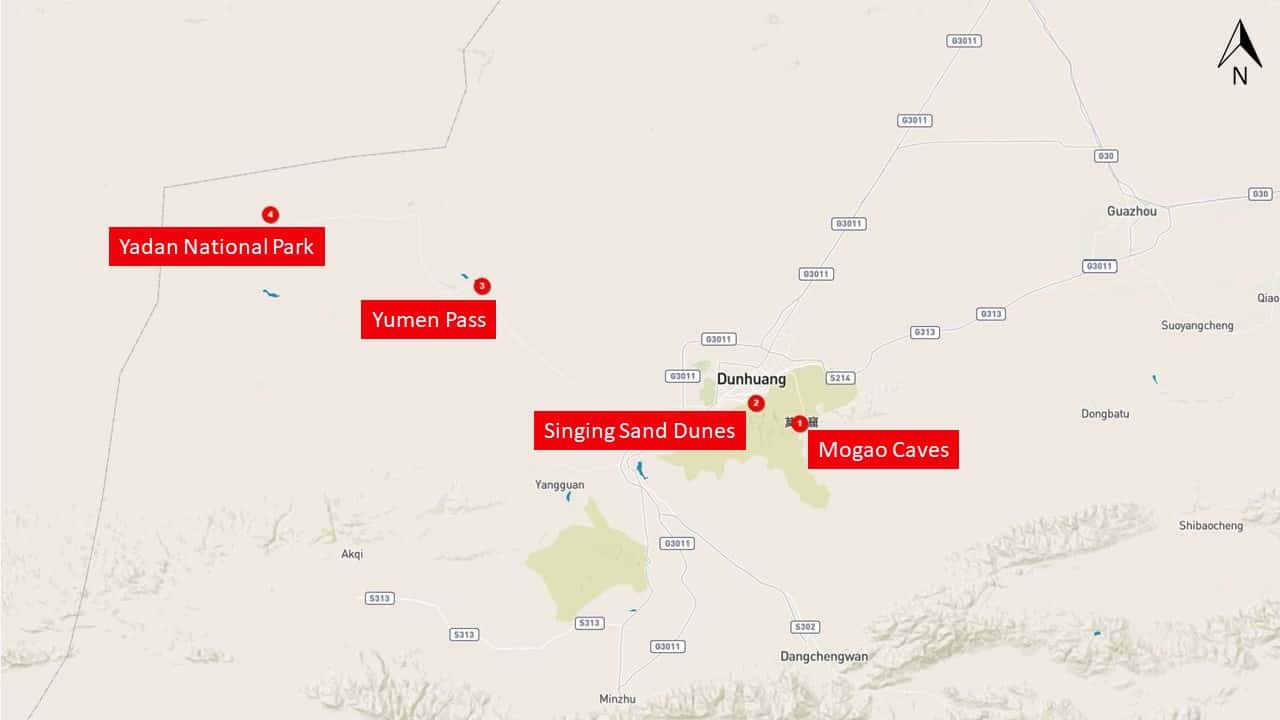
Dunhuang may not be the first place you have in mind for a travel destination, but to understand the various cultures that have shaped the world as we know it, Dunhuang is the place to be. Be intrigued and leap back in time to where this bustling city made history and influenced both East and West with its charm. Get in touch with our team at Intriq Journey to start planning for your personalised and hassle-free journey to the Silk Road.
GET STARTED WITH YOUR PERSONALISED UNIQUE JOURNEY
Call us at +852 2885 2181 or email us at enquiry@intriqjourney.com to start planning for a holiday that is completely tailored to your preferences.
Contact Us